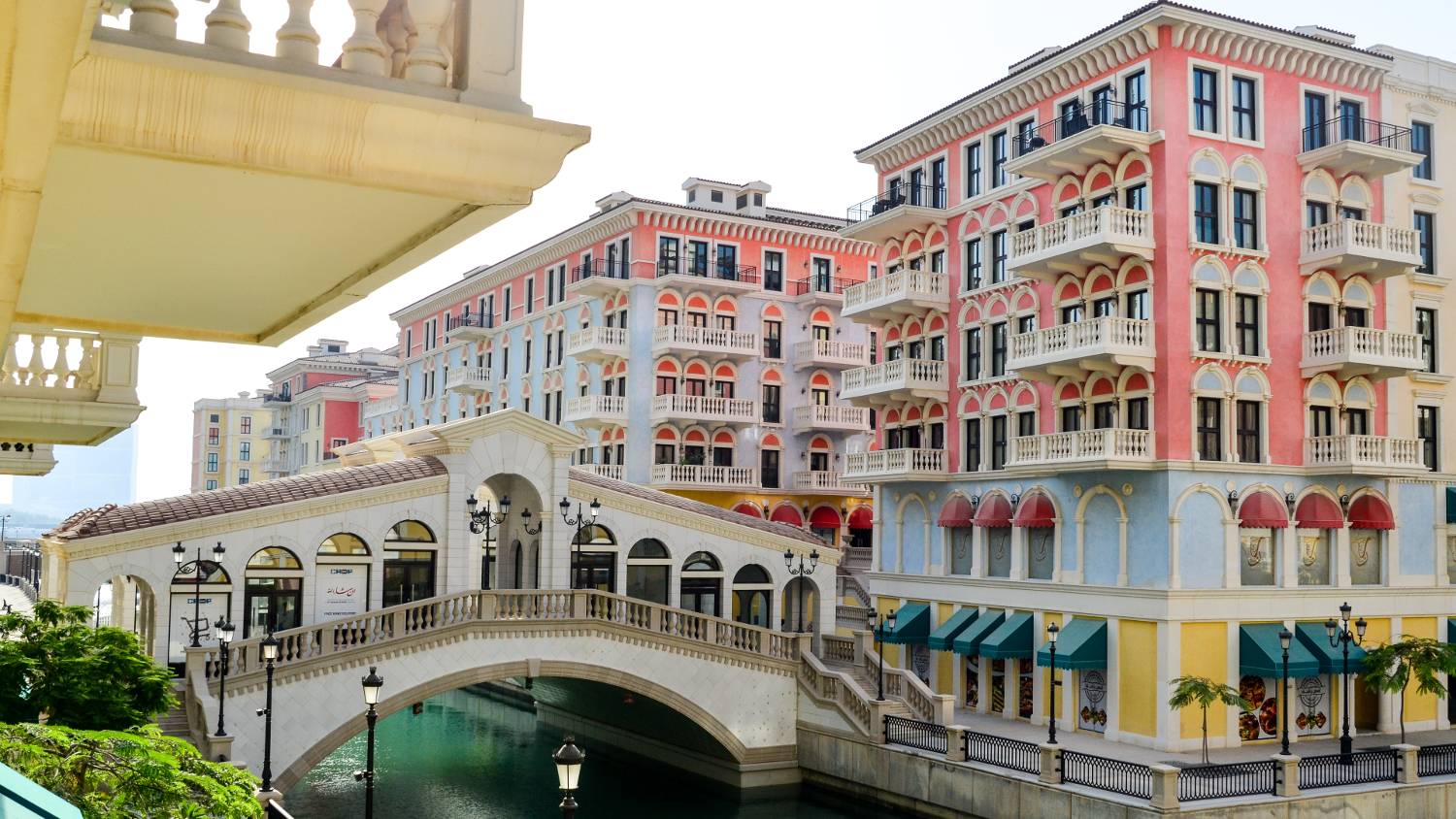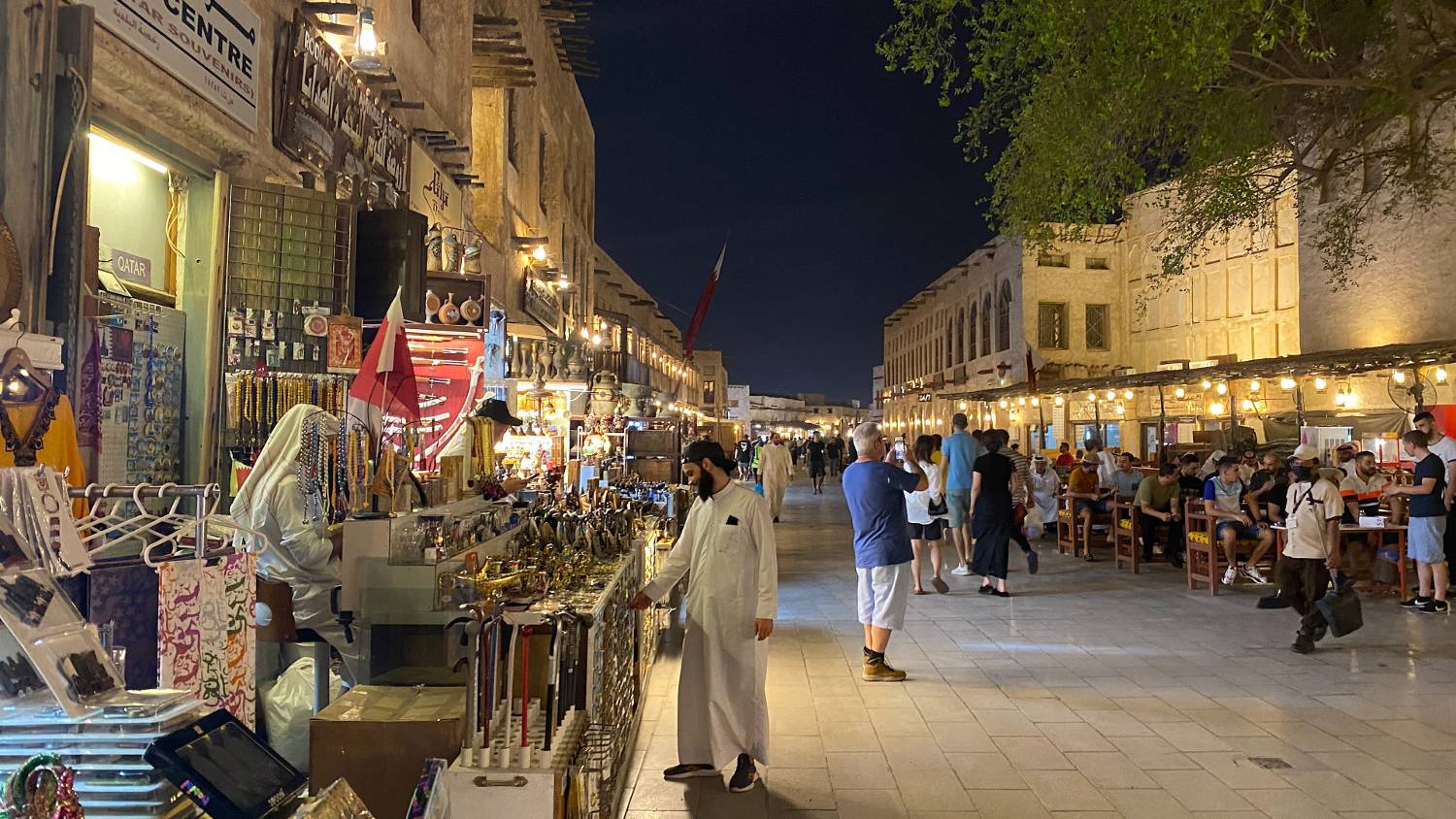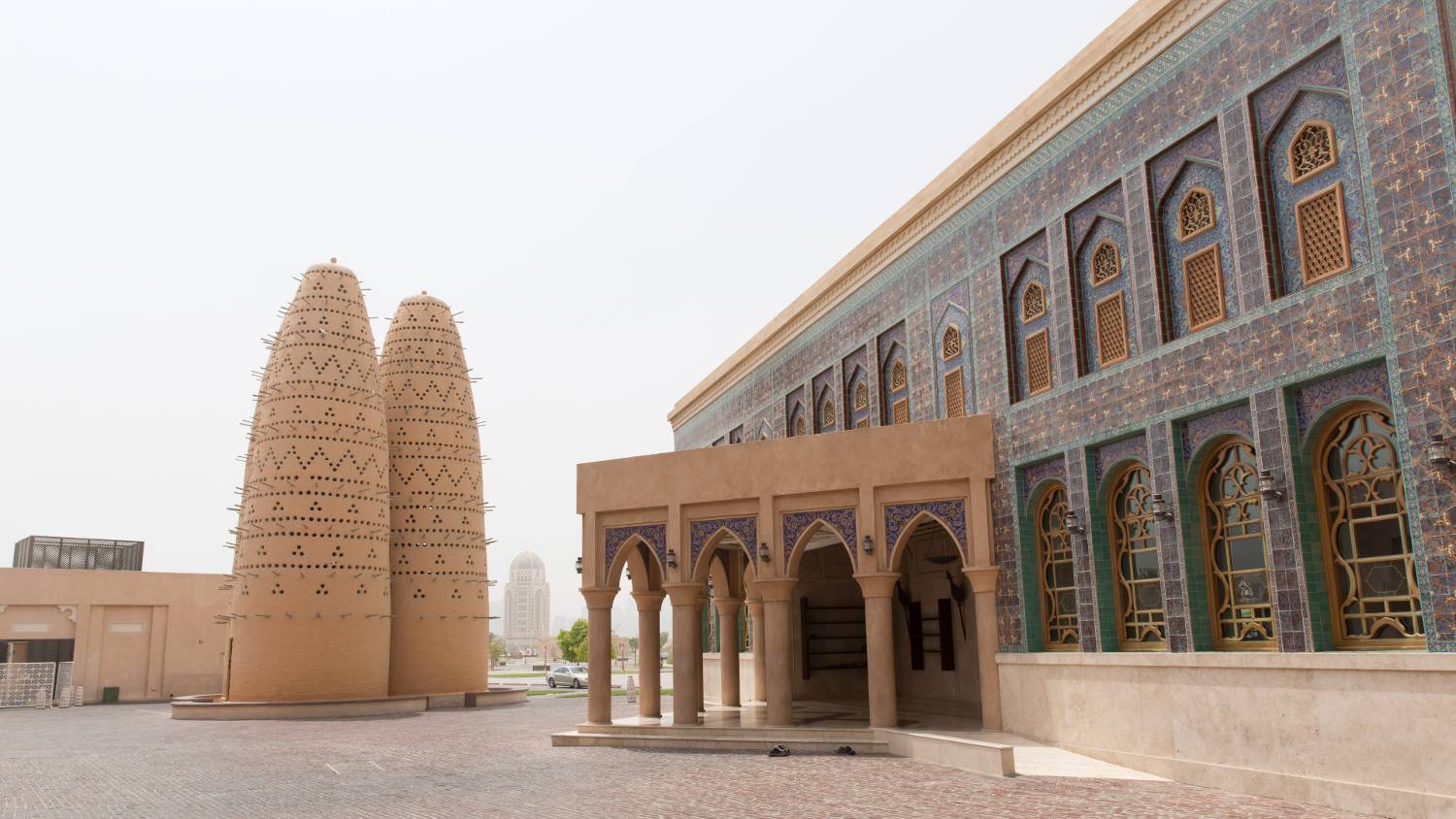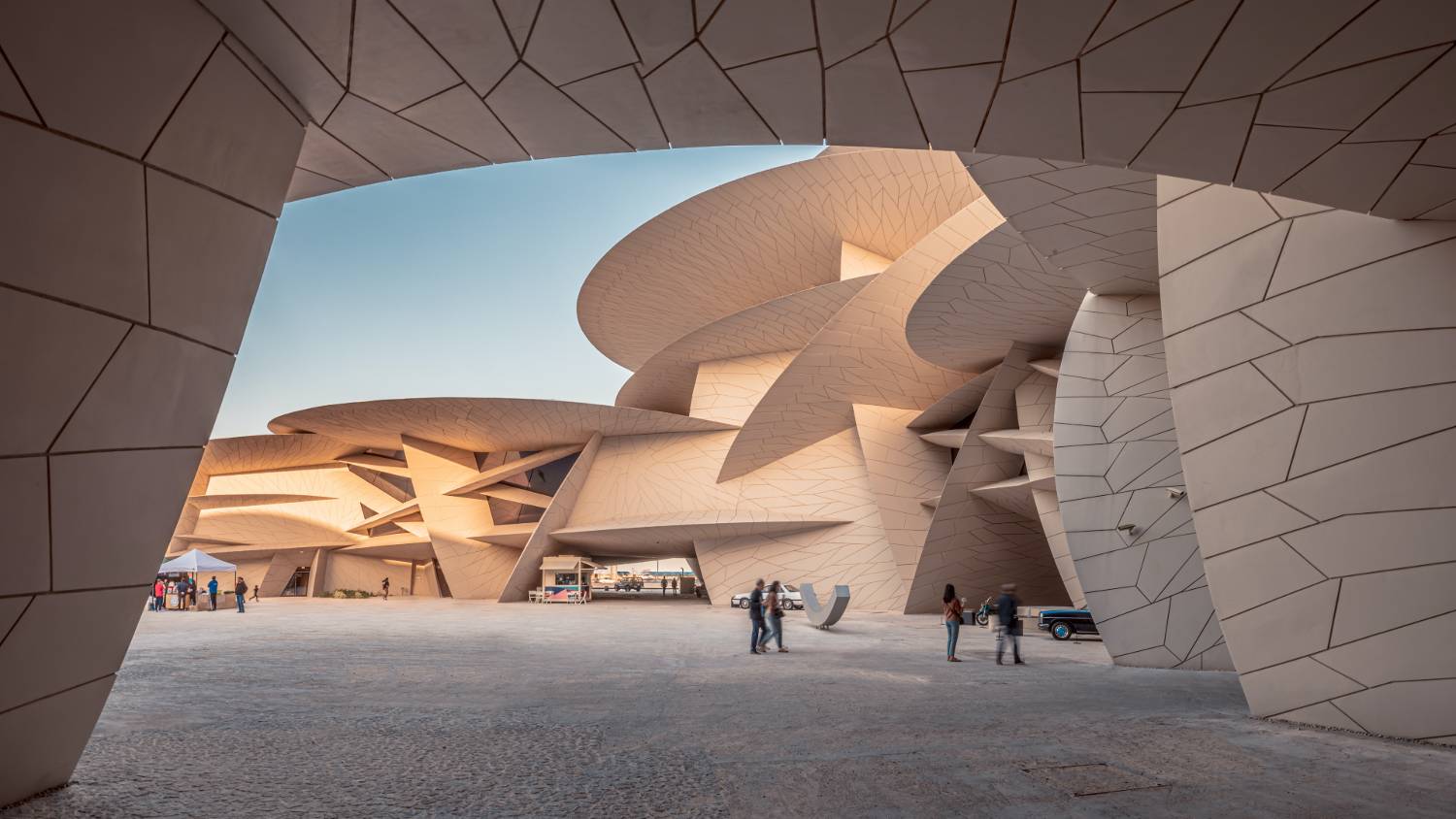Qatar World Cup 2022: Nine must-visit attractions

If there's one thing that's plunged Qatar into the limelight, it's the World Cup.
Commencing next month, the tournament is expected to attract over 1.2 million football fans to the small country, eager to explore the peninsula in between matches.
Qatar is so small, it can be driven across in less than a day. But for those who are willing to slow down and take time to explore, there’s so much to see that one trip may not be enough.
Here, we take you on a tour of the best attractions to visit in Qatar.
1. The Inland Sea
New MEE newsletter: Jerusalem Dispatch
Sign up to get the latest insights and analysis on Israel-Palestine, alongside Turkey Unpacked and other MEE newsletters
Known to locals as Khor Al-Adaid, or the Inland Sea, this 15km-long tidal bay is hidden within Qatar’s desert land, an hour's drive from Doha in the southeast, close to the border with Saudi Arabia. There are no roads leading to the scenic waterside, so to get there you must be prepared to go off road by hiring a four-wheel-drive vehicle. The tyres will need some air to be released to lower their pressure and gain better traction, before crossing the shifting sand dunes.
In the past two decades, tour operators have set up desert-related popular activities like dune bashing and sandboarding in this oasis. There is also camel riding for those wanting to experience how people still crossed these lands less than a hundred years ago.
Khor al-Adaid has served as a weekend retreat for Qatari families for generations, with archaeologists discovering signs of early farming and fishing settlements. Prehistoric sites were also found on the small islands in the bay.
In 2008, it was added to Unesco’s World Heritage Convention Tentative List: for its “remarkable landscape” and “undeveloped natural beauty”.
It has its own unique ecosystem, which is home to several species, including turtles, gazelles, oryxes, dolphins and the endangered dugong - a cousin of the manatee.
With nights often dry and skies clear, it’s also a prime site for star gazing. Just after midnight is the best time to look up and capture the magnificence of the Milky Way.
2. The Corniche
Although it may seem like just a long stretch of pavement along the bay, the seven-kilometre stretch of Doha's promenade is the go-to spot to enjoy long walks, or relax with loved ones. Qataris and expats alike can be found taking morning walks here.
With the Museum of Islamic Art at one end and the city's business district at the other, a stroll along the Corniche gives visitors a chance to absorb the city’s iconic skyline.
In the middle of this stretch, Al Mourjan restaurant serves pricey Lebanese dishes, while a giant statue of Orry the Oryx, Qatar's mascot for the 2006 Asian Games, looks on. The 30ft structure was built in honour of the country's national animal.
Other buildings of significance along the walk include the Amiri Diwan, the home of Qatar’s government, and towards the northern end, the Sheraton hotel, which became the first building along the waterfront when it opened in 1982. The hotel now has several shaded parks and dancing fountains beside it, providing respite for Doha families wanting to keep cool on warmer days.
3. Museum of Islamic Art
At the eastern end of the Corniche sits the majestic Museum of Islamic Art.
By day, the magnificent structure is coloured by light and shade, depending on the position of the sun; and by night, colourful uplighting adds to its charm.
Coated in limestone, the museum was built to blend in with its desert-like environs.
The museum was designed by the late Chinese-American architect IM Pei, whose portfolio also includes the pyramid at the Louvre in Paris. Five storeys comprise what is said to be the largest collection of art from across the Islamic world.
Exhibits include carefully curated Arabic calligraphy and early Islamic books, including a copy of a Quran from the 17th century. There are miniatures and textiles, jewellery and woodwork honouring different periods of Islamic history.
The museum has held numerous popular exhibitions, such as one in 2013 on Hajj, titled: The Journey Through Art, in collaboration with the British Museum, and Qajar Women: Images of Women in 19th-century Iran, in 2015.
After an 18-month closure for renovation, the recently reopened museum has acquired several new artefacts, including the ninth-century Blue Quran and the 17th-century Varanasi necklace.
4. The Pearl
Built on land reclaimed from the sea, The Pearl is an artificial island development of residential towers and town houses, said to resemble a string of pearls when seen from a bird's eye view.
The Pearl takes its name from pearl fishing, a traditional industry which once thrived in Qatar. Situated in Doha's West Bay area, it opened in 2006 and quickly became home to expats working in professions like oil and gas, banking and media.
More recently it became one of the few places in the country where foreigners can now buy property, but with prices starting at $357,000 for a one-bedroom apartment, this option is beyond the reach of most of Qatar's lower-income workforce.
The Pearl is pedestrian friendly, with covered walkways leading visitors between the different precincts. The main area, Porto Arabia, has a 2.5km path around it, and it’s where locals and expats alike go to promenade and be seen.
Designer shops and expensive restaurants located along the base of the towers overlook a yacht-filled marina.
Within the Pearl sits Qanat Quartier, a brightly painted residential area said to be inspired by Venice. It even includes a replica of the Rialto Bridge, with waterways running beneath.
It was built by Qatar’s two million-strong labour force, brought in mainly from India, Bangladesh and Nepal, but the exclusive parade, is only open to residents. For workers, recreational facilities have been built within the labour camps where they live.
5. Banana Island
On first glance, you could be mistaken for thinking Banana Island, with its water-bungalows sitting atop pristine waters, was the Maldives.
It is a popular travel destination for many Qataris looking for a mini-break staycation.
Opened in 2015, the man-made resort can be reached by taking a 25-minute catamaran ride from the Al Shyoukh Terminal along Doha's Corniche, close to the Museum of Islamic Art.
Once on the 13-hectare island, visitors can enjoy all the comforts expected of a high-end resort, from fine dining to a luxury spa.
It’s also the place to go to spend the day kayaking or snorkelling around the island waters.
6. Souq Waqif
Built on the grounds of Doha’s oldest shopping area, Souq Waqif opened its perfectly crafted cobbled walkways to shoppers and tourists in 2006.
With a name meaning "the standing souq", its history goes back at least a century, when Bedouins and locals would meet here to trade goods - and as it was close enough to the waterfront, merchants sailing in would also be able to exchange their wares.
As Qatar prospered in the 1990s from its oil and gas revenues, the souq fell into decline. In 2003 a fire is said to have destroyed whatever remained of it, paving the way for much-needed restoration.
Buildings that were constructed after the 1950s were knocked down and rebuilt using traditional Qatari architecture - such as mud walls and timber beams - adding to the look of an authentic souq.
The Bismillah Hotel, now a five-star boutique hotel, is one of the few original buildings to remain in the souq, and is thought to be one of the first hotels in Qatar.
Each alley in the maze-like sprawl sells different goods, from fabrics to spices, and oud to pets. Porters, known as hamalis, push wheelbarrows alongside shoppers to help carry their goods. Most are older Iranian men who came to work in the city decades ago, and stayed.
Local and international foods cater to shoppers and bargain hunters in the bazar's many cafes, restaurants and shisha lounges - al fresco dining in the balmy evenings is popular, and gives the souq a real buzz.
7. Katara Cultural Village
Halfway between West Bay and the Pearl, Katara Cultural Village is a cluster of simple sandwashed buildings, home to an opera house, a planetarium, libraries and art galleries, and even an amphitheatre where famed singers and scholars have performed to crowds of up to 5,000.
There are also two large pigeon towers, one ornate, Persian-inspired mosque, known as Katara Masjid, and another mosque covered in tiny gold tiles.
The venue opened in 2010 as a place for artists to exchange ideas and showcase their culture.
For those who prefer to catch some sun, there's also a 1.5 km stretch of sandy, family-friendly beach where pedalos and canoes can be hired.
And, like everywhere in Qatar, the food choices are never-ending. Katara has a mix of street food outlets, serving fried potatoes on a stick, or plates of hot koshary, an Egyptian staple of pasta, lentils and spicy tomato sauce. There are also sit-down restaurants serving Ottoman feasts and platters of seafood.
But it’s the drive-through tea shop that attracts the most customers. On most nights, people gather outside the popular Chapati and Karak to get a fix of strong, sweet karak tea, usually accompanied with a rolled buttery chapati.
8. Imam Abdul Wahhab Mosque
The largest mosque in Qatar, Imam Abdul Wahhab, also known as the Qatar State Grand Mosque, was opened in 2011 in Doha's Lejbailat neighbourhood.
Built on the grounds of the original Grand Mosque, constructed by the country's founder, Sheikh Jassim bin Mohammed Al Thani, the mosque can accommodate up to 30,000 worshippers.
Made from sandstone, and following the clean lines of traditional Islamic architecture, its beauty lies in its simplicity. Its marble floors were designed to keep prayer-goers cool during the summer months, while arches and corridors covered by small domes provide shade to visitors and worshippers.
The mosque also offers Quran memorisation classes, and hosts cultural and education events throughout the year.
9. National Museum of Qatar
Designed by the French architect Jean Nouvel to resemble a desert rose crystal, this epochal museum opened in 2019.
Like the state mosque and the souq, the museum is built on the site of an earlier iteration, the first Qatar National Museum, which was built in 1975.
The museum celebrates the country’s heritage and traditions, with exhibitions showcasing Bedouin artefacts, jewellery and weapons, and displays on local tribal wars, textiles and traditional dress.
It's also the place to learn and discover new concepts of thought and understanding - which is what Qatar is all about.
This article is available in French on Middle East Eye French edition.
Middle East Eye delivers independent and unrivalled coverage and analysis of the Middle East, North Africa and beyond. To learn more about republishing this content and the associated fees, please fill out this form. More about MEE can be found here.













